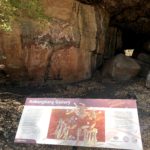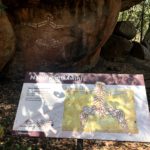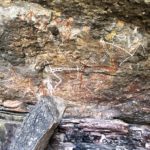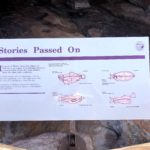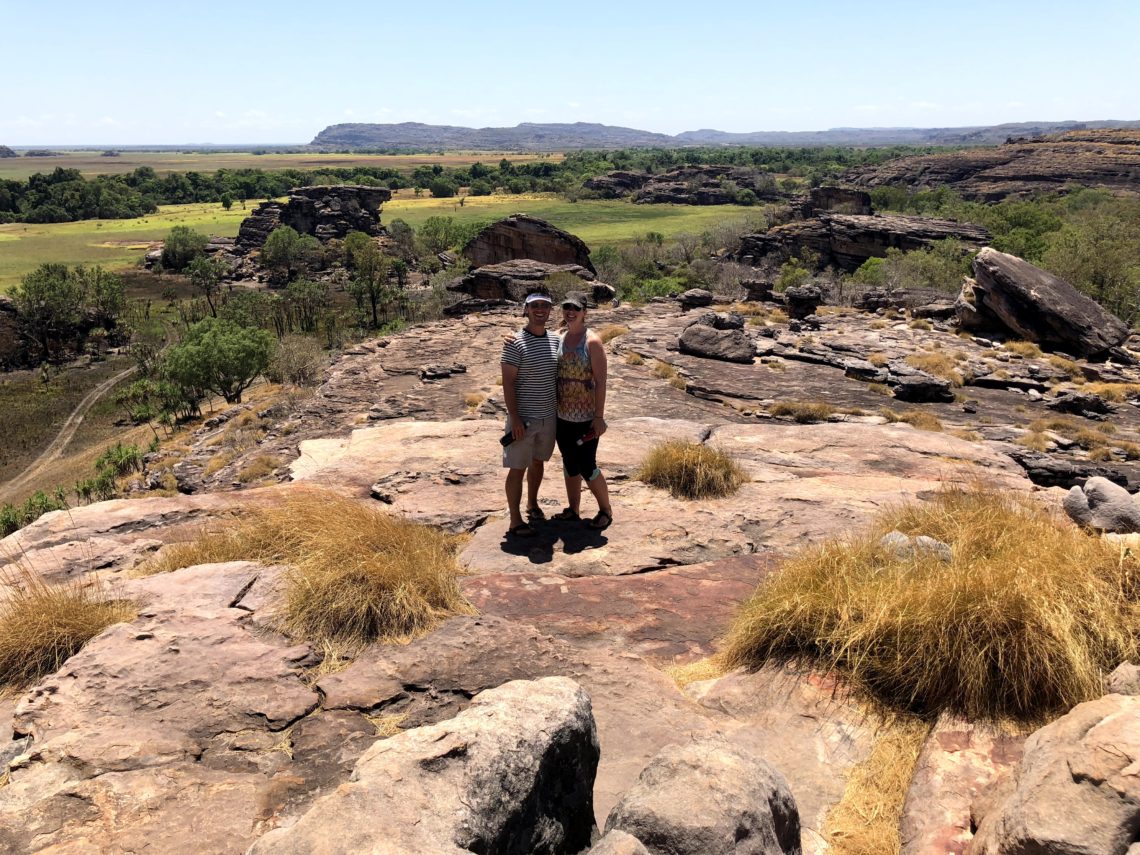
Waterfalls, Crocodiles, and Rock Art at Kakadu (definitely do once)
From our little sojourn in hotels in Bali and Darwin, it was time to head back to the bush, by way of Kakadu National Park.
Here’s a map of the area covered in this post in green, along with the entire journey so far (past areas covered are in red). We were in Kakadu for five nights, from the 25th through the 30th of September. We could have stayed longer and explored more!! I think seven nights would have been about right.
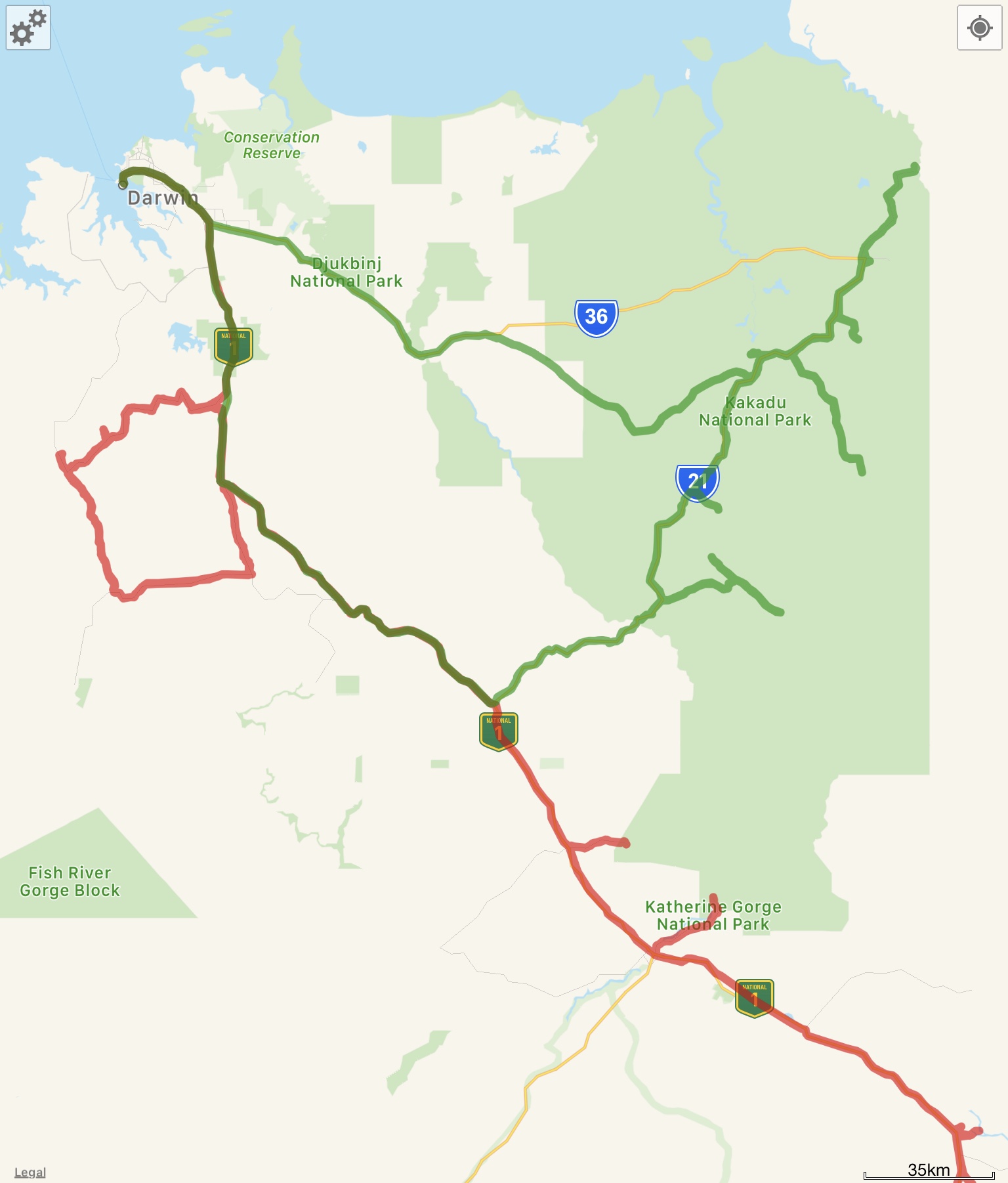

I’ll kick it off by mentioning that most of the other travellers and locals we met referred to Kakadu as “Kaka-don’t”. The view is that it’s very expensive to visit, and that other parks have all the same things on offer for much less money. However, we still dove in: it’s an Australian national icon, and we couldn’t miss it in good conscience. It’s $40 per adult for a 7 day park pass, plus $15 to $35 per night to stay in campgrounds near the popular attractions, plus any fees for private tours, food, fuel etc. We definitely spent more in Kakadu than other places, but it was a must-do, and the sights were absolutely beautiful and awe-inspiring. I think we would visit again, but in a different season, to see different versions of the waterfalls and hikes and lookouts. I would recommend everyone go and see it at least once – with the caveat that you MUST have a 4wd to access the best waterfalls (Gunlom, Maguk, and Jim Jim).
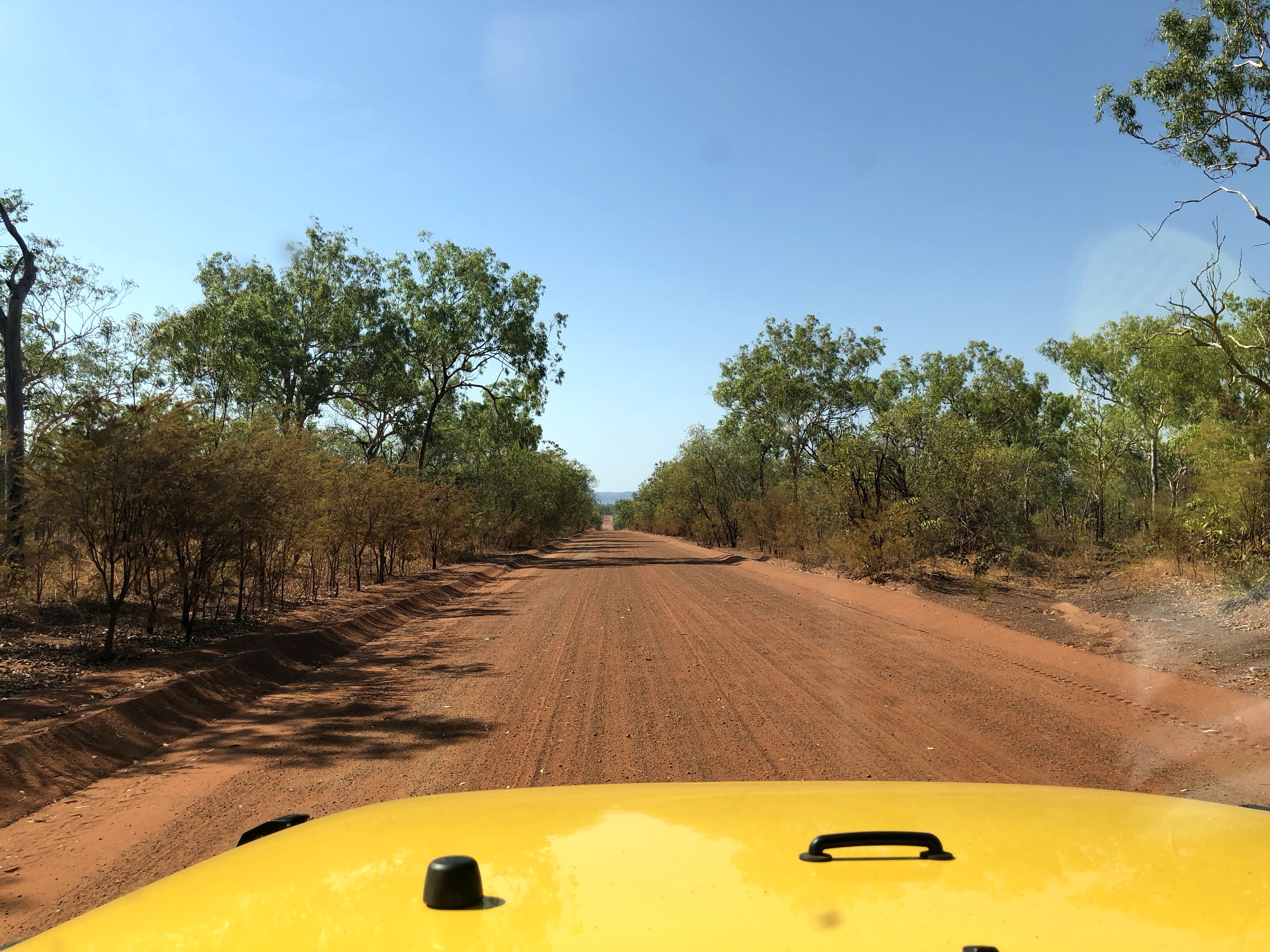
Our first stop in Kakadu was Gunlom Falls, at the end of a 4wd track (or more accurately a terribly corrugated dirt road), at the southern end of the park. Gunlom is famous for the pool at the top of the waterfall, which is a natural infinity pool overlooking Kakadu. It was beautiful and we certainly got our Insta-photos in!


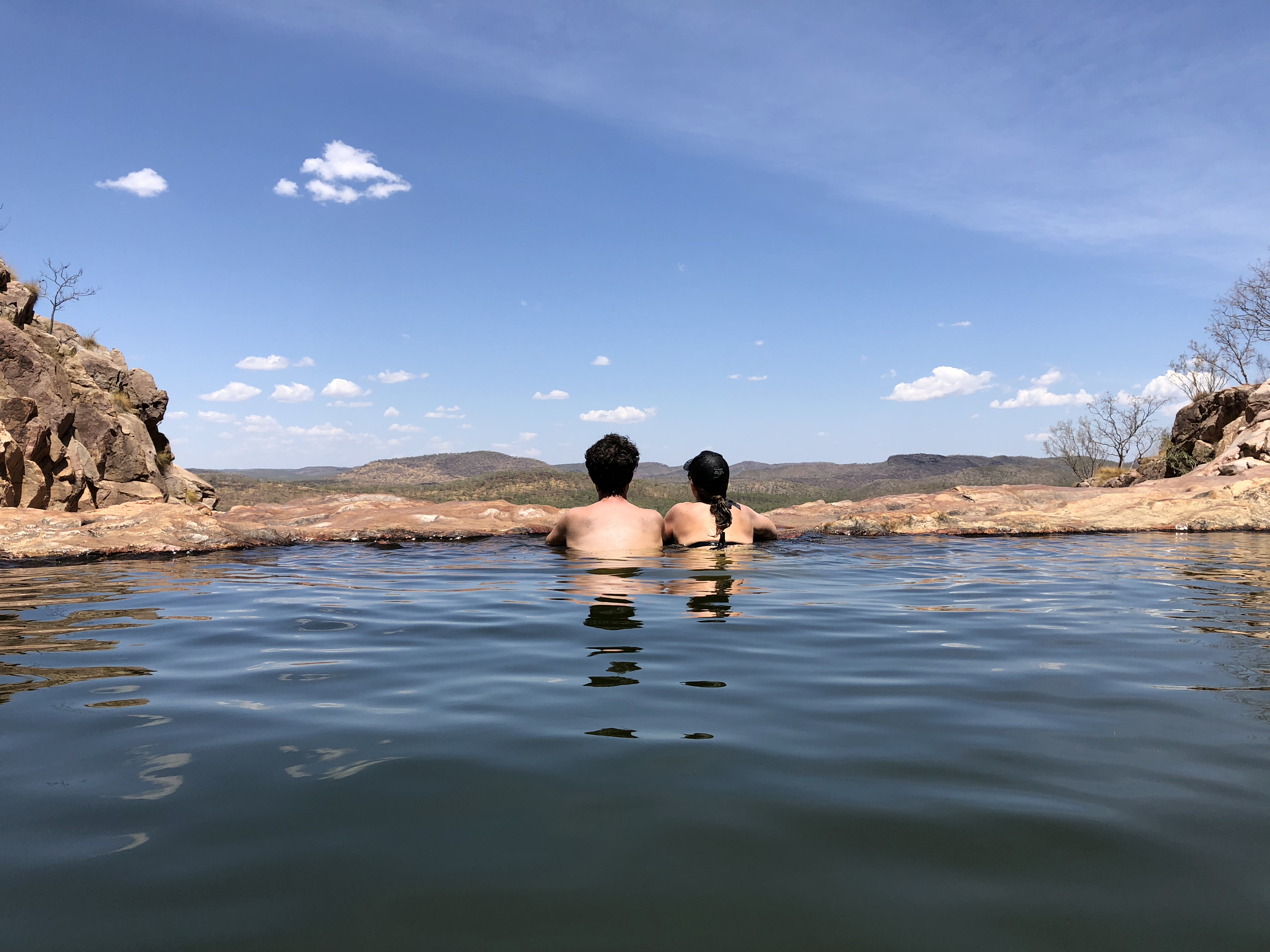
We stayed at Gunlom for two nights, spending a whole lot of time at both the upper infinity pools as well as the lower, huge plunge pool.

We left Gunlom to go check out another waterfall (Maguk), and in hindsight while Gunlom is more famous, I loved Maguk much more!!
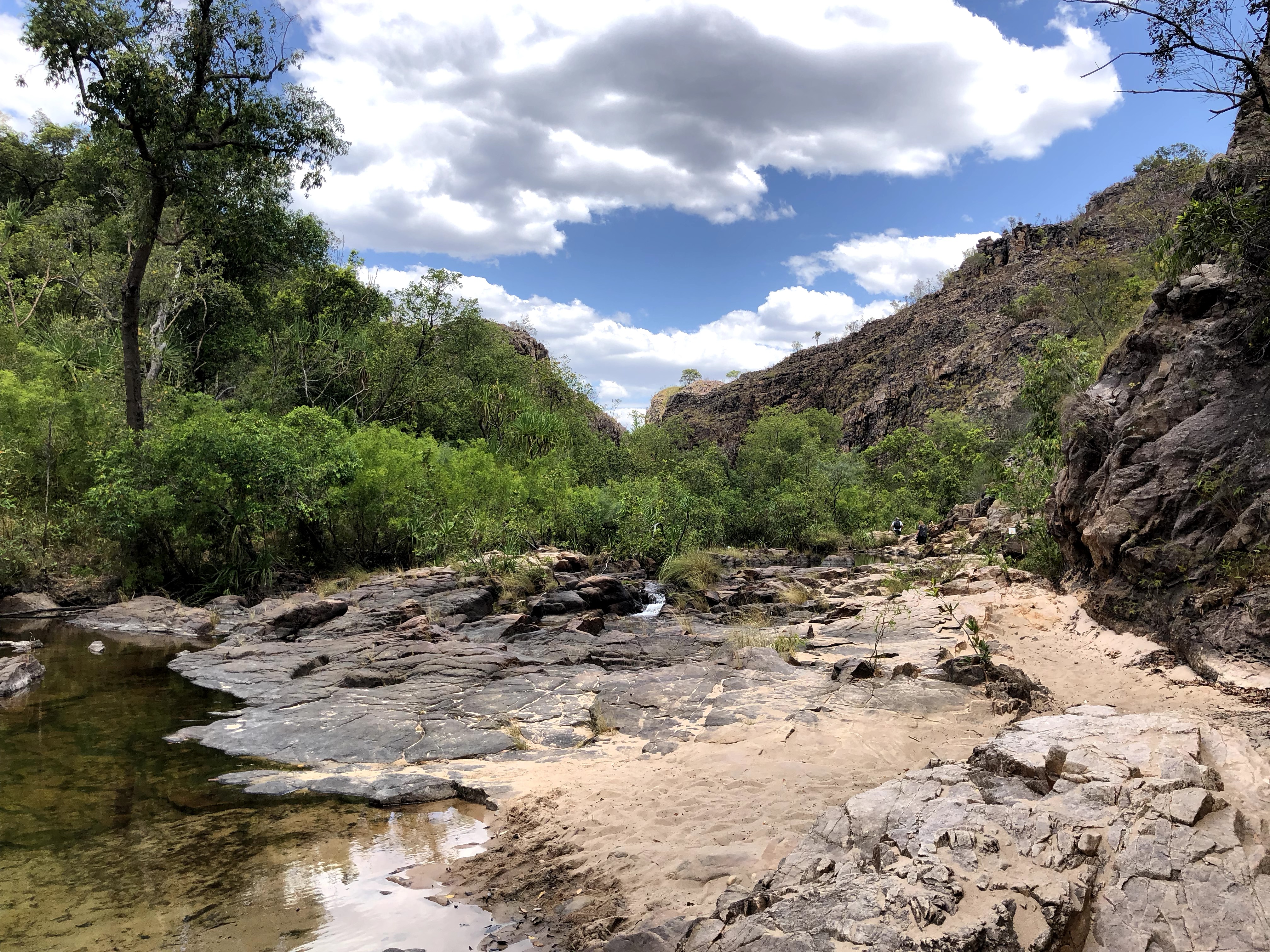
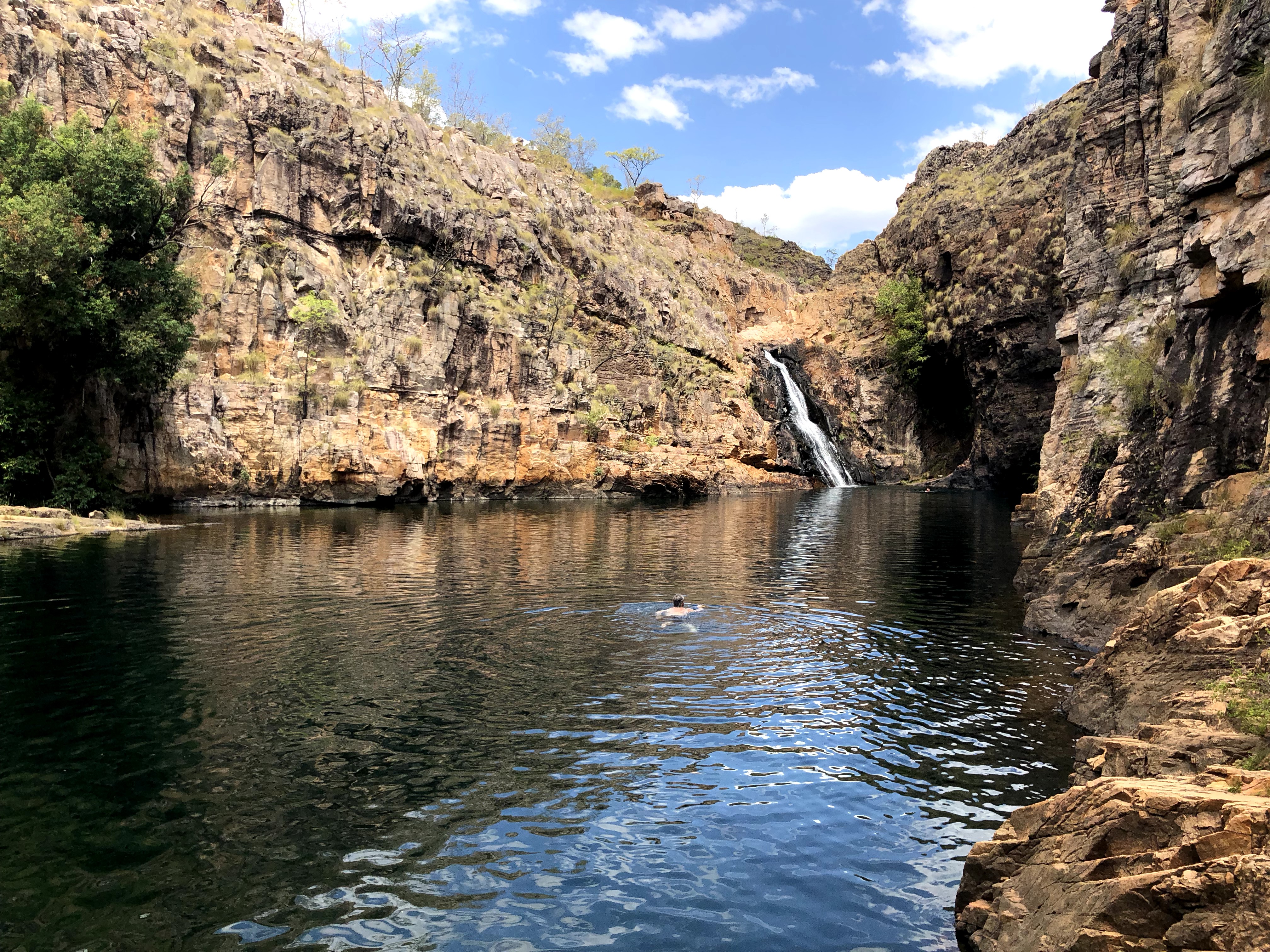
After a swim and some lunch at Maguk, it was time to move on to the Warradjan Aboriginal Cultural Centre, a fantastic showcase of the traditional owners way of life in Kakadu, the animals, birds, and plant species, and ancient traditions and how they’ve carried through to the present day. We really enjoyed the centre, although the traditional owners ask that you not take photo inside, so you’ll just have to go and check it out yourself!!
That night we camped at Cooinda, next to some some Dutch friends we’d met on the road (hi DaphCel!). One of them, Daphne, has a popular Dutch travel blog that we can’t read (because, um it’s in Dutch), but her photos are amazing, and it’s well worth checking out her blog and Instagram for those alone.

The next morning we were up early and off on a sunrise cruise of the Yellow Water Billabong, a beautiful river/billabong/floodplain in the middle of Kakadu. Our guide, Reuben, was descended from a long line of people indigenous to the area, and had wealths of knowledge to share. He was awesome. He said he also runs week-long 4wd tours of Kakadu, which we’d love to join one day – maybe next year!
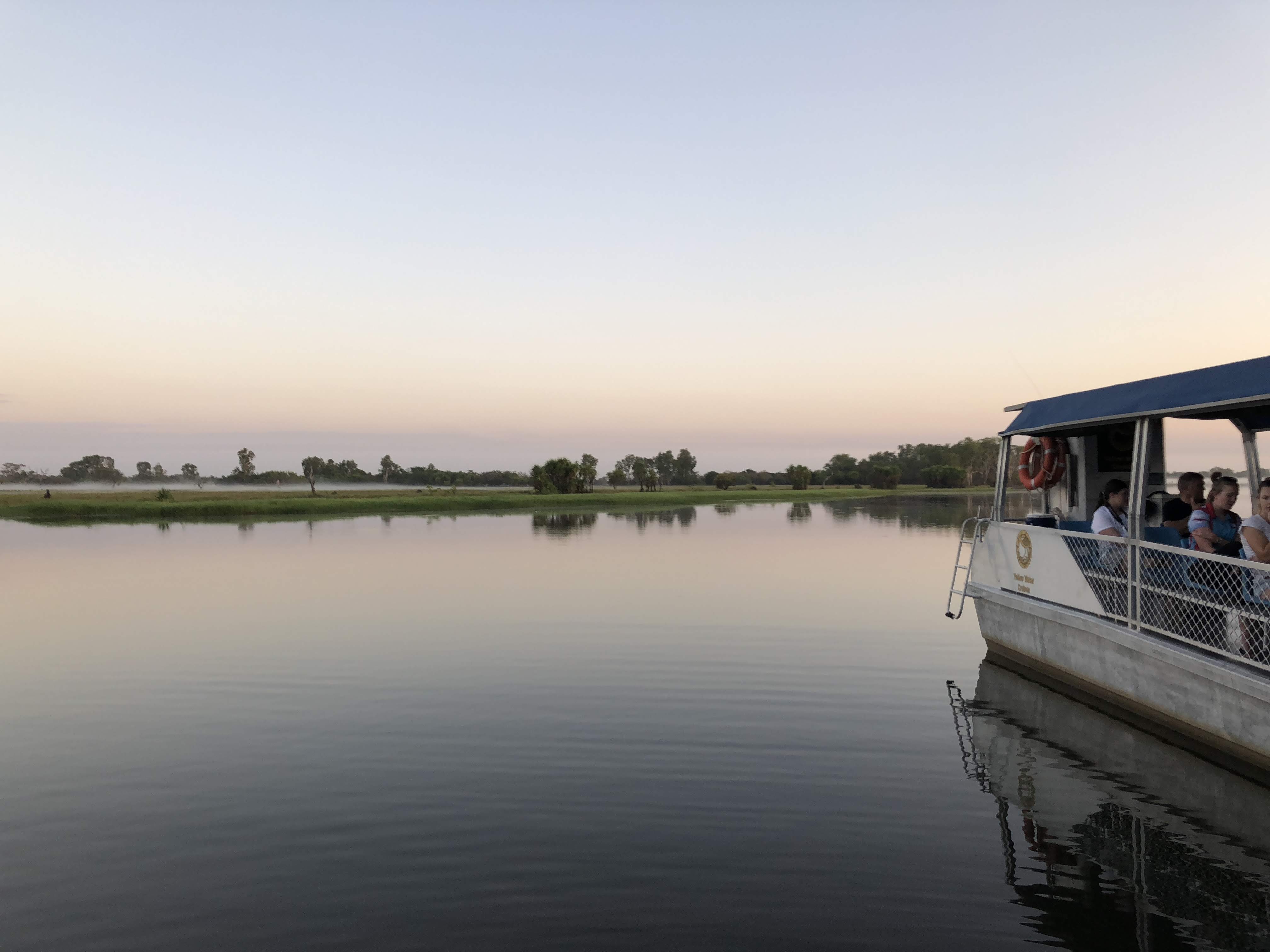

The cruise was about 2 hours long and full of amazing sights and information about the local flora and fauna. Incidentally, we also very much enjoyed the safety briefing at the beginning of the cruise in which they’re obligated to tell you all about the life jackets on board the boat, and then firmly admonish you to ABSOLUTELY NOT GET INTO THE WATER UNDER ANY CIRCUMSTANCES. If the boat is sinking, stay on it as long as possible, or find someone else to climb on top of. Reason being, the water is absolutely chock full of these guys and a life jacket isn’t going to do you any good at all…

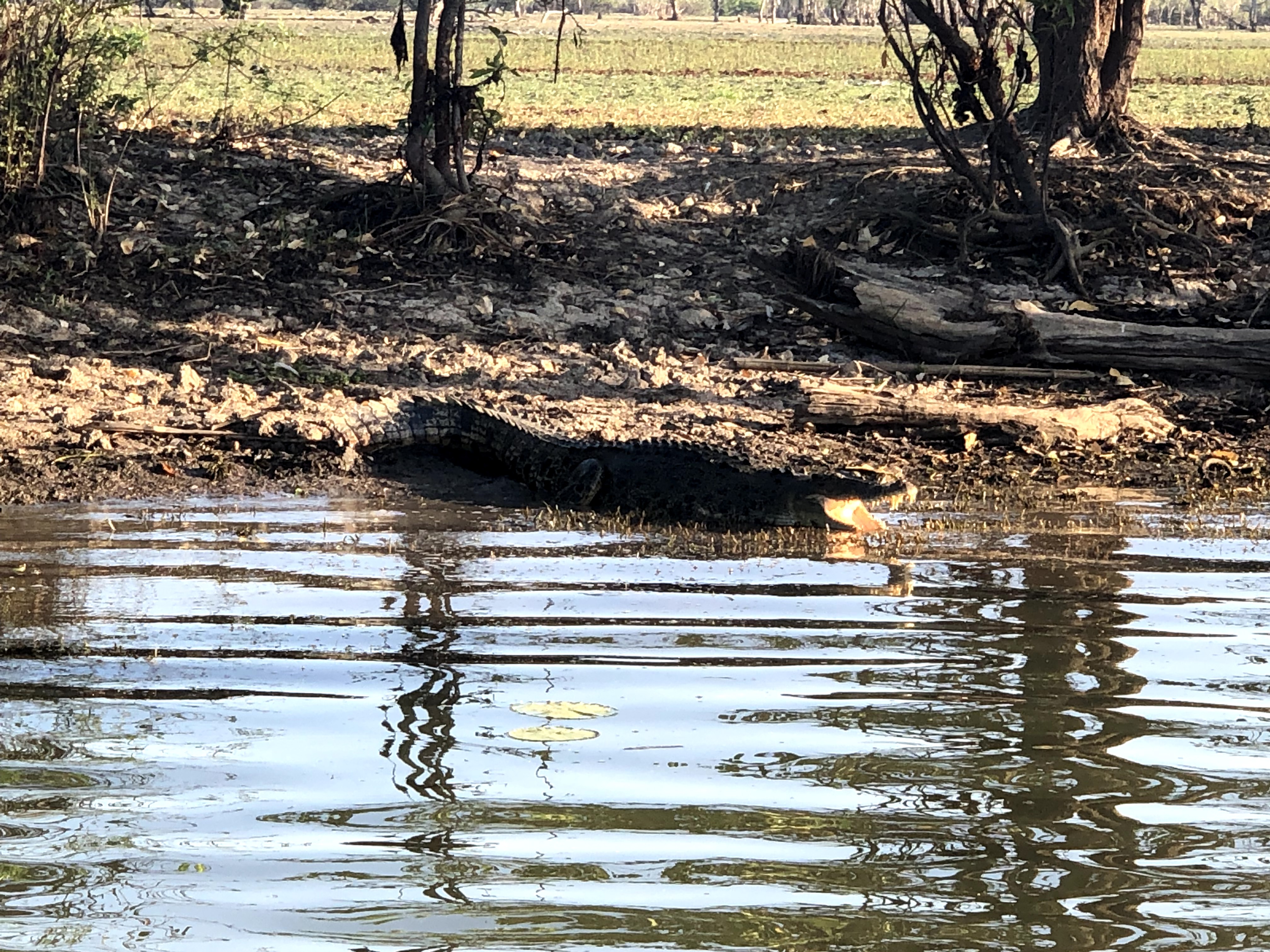
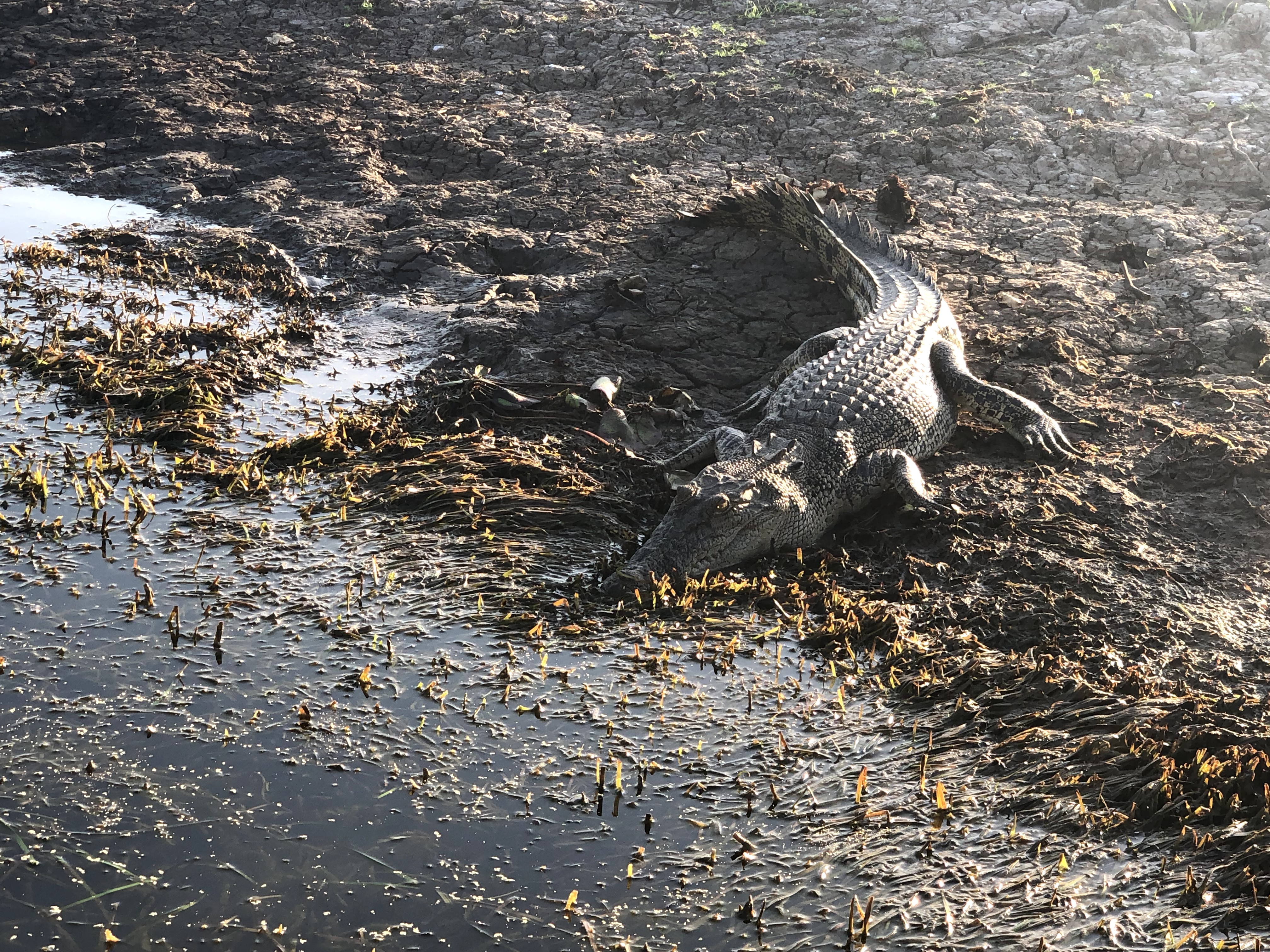
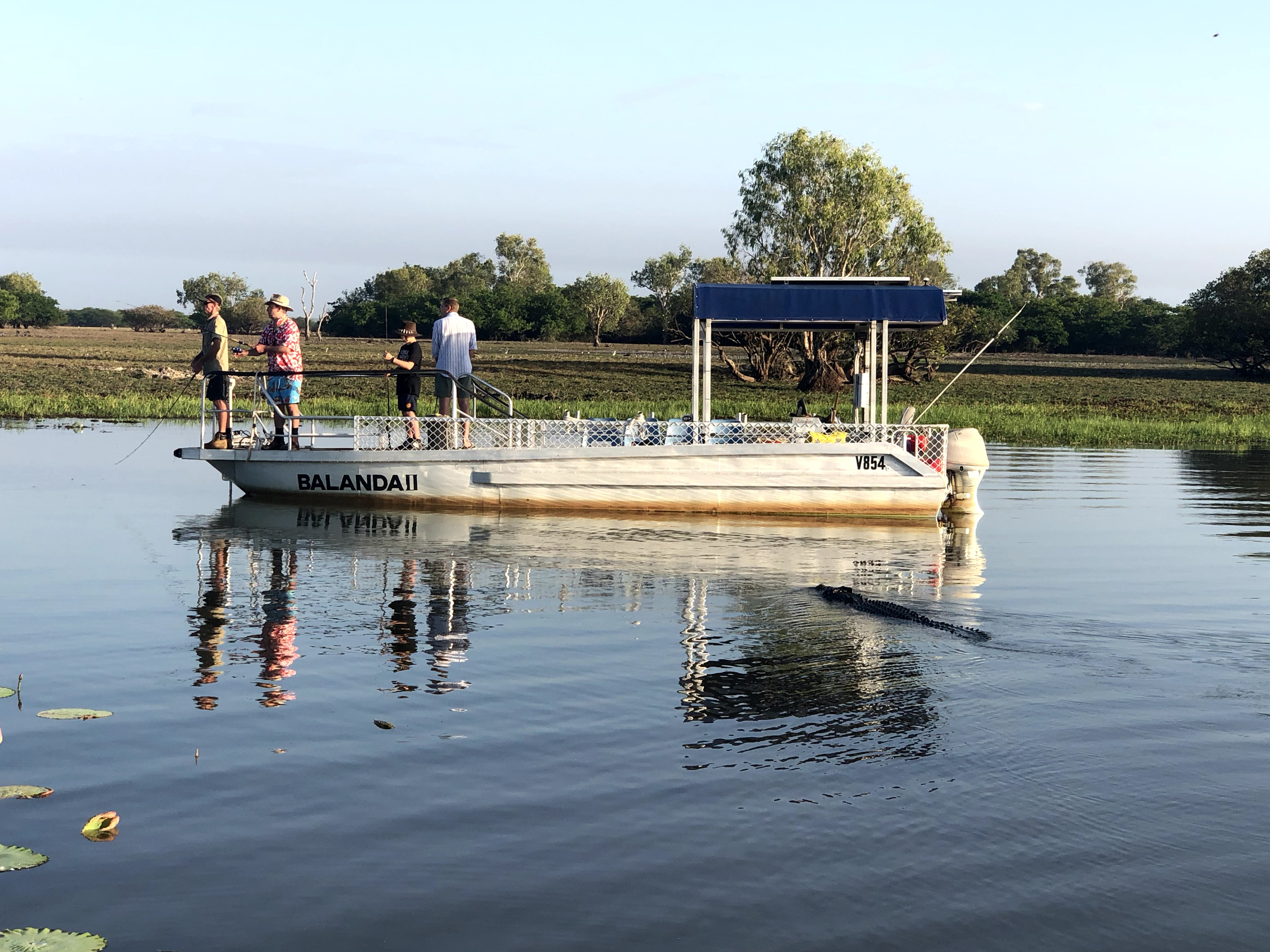
While croc-spotting is pretty sensational, the other wildlife was amazing too – particularly the bird life. We saw countless species of birds, including bright azure kingfishers and the tiny, rare gouldian finch. We even saw a migratory bird from Sweden (can’t for the life of me remember his name though). Of course the more rare birds are the ones who hate posing, but you can see some photos of them over at the Parks Australia website (scroll to the bottom) if you’re really keen!
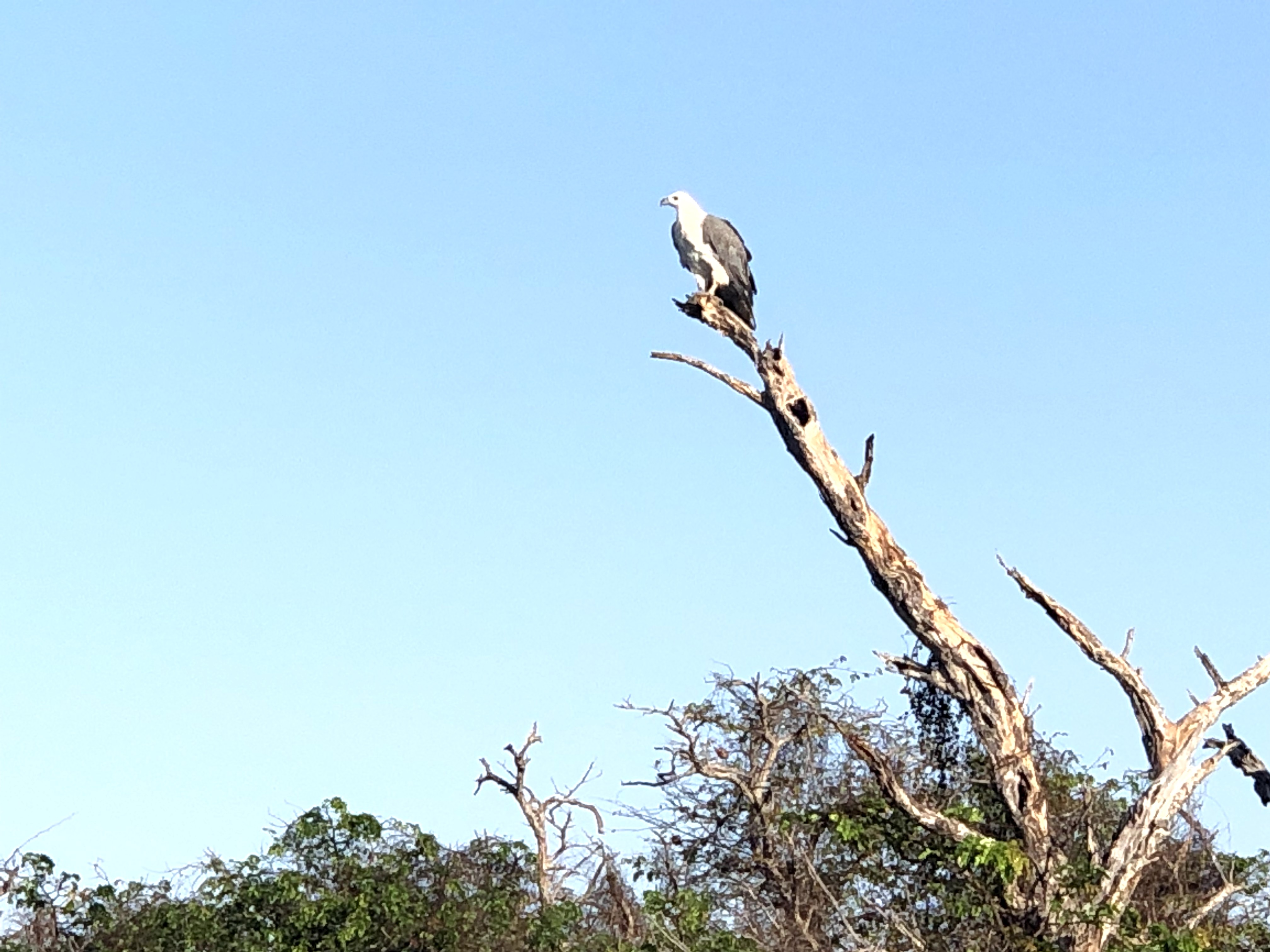
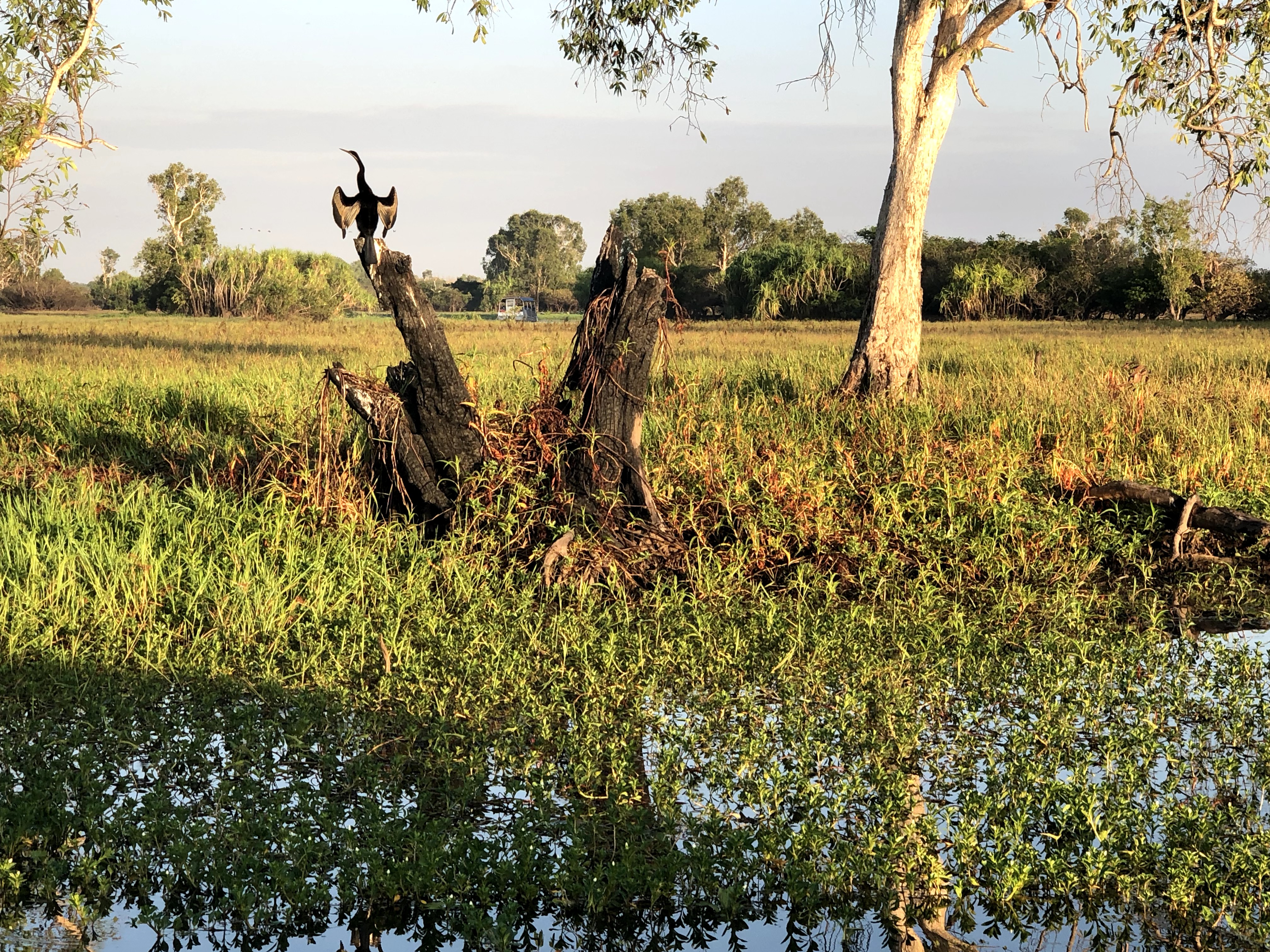
I’ve got to say, the sunrise Yellow Water cruise was one of the best boat cruises we’ve ever done, hands down. Waking up at 5:30 is well worth it, and the flat water of the billabong and the birds calling at sunrise is so peaceful, it’s something we’ll remember forever.
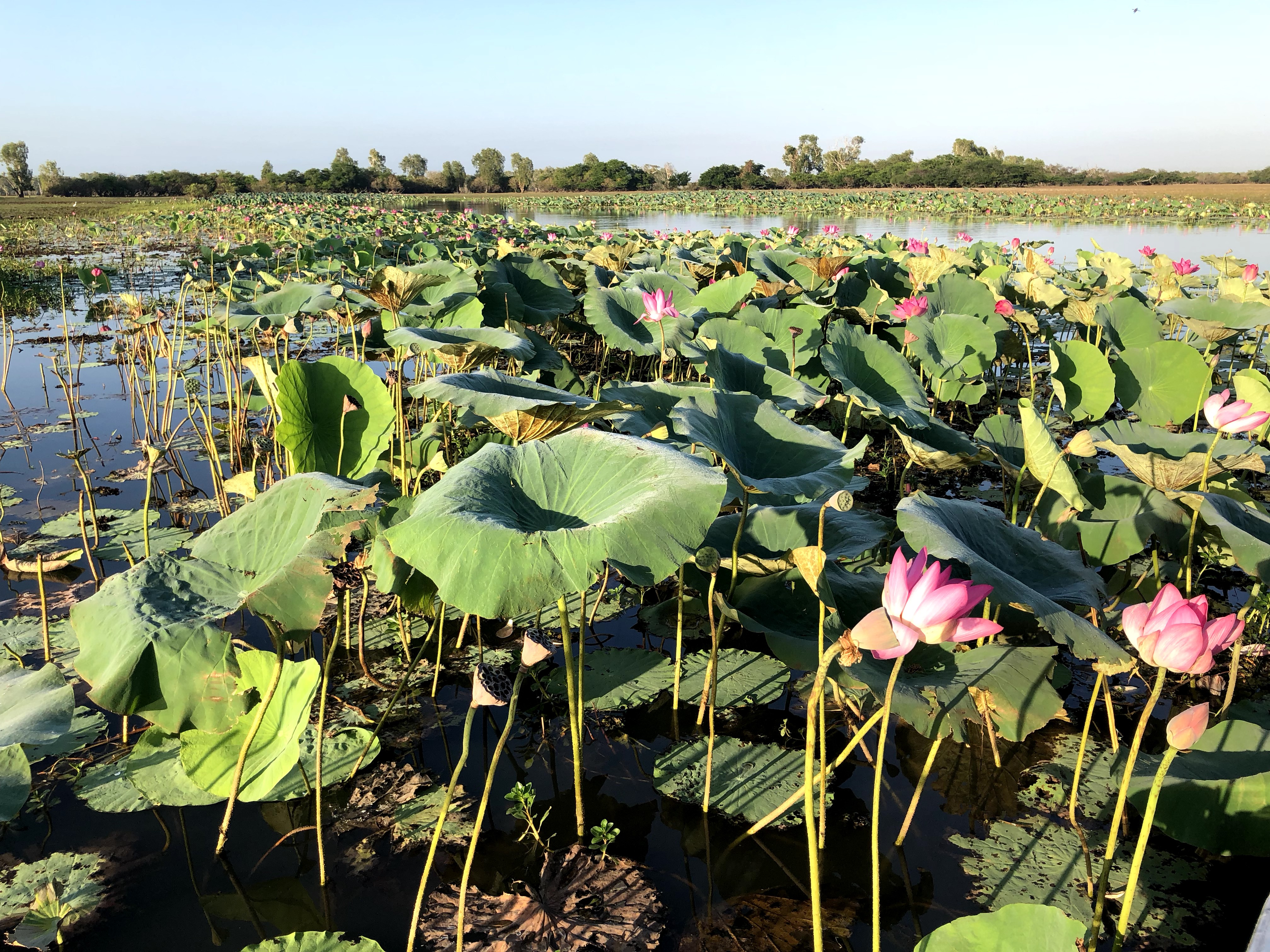
From our sunrise cruise it was time to go and check out some of the amazing Aboriginal rock paintings that Kakadu has to offer. First up was Anbangbang gallery (pronounced Arn-Barng-Barng). In addition to seeing the rock art, this was also an interesting and sobering reminder of how the Indigienous people of Australia were affected by colonisation. One of the signs in this area talks about how this land used to belong to the Warramal clan, but now everyone in that clan is dead, so neighboring tribes are looking after it. Also, this area used to be called Nourlangie rock by white settlers, which is a complete bastardisation of the name of a neighbouring area.
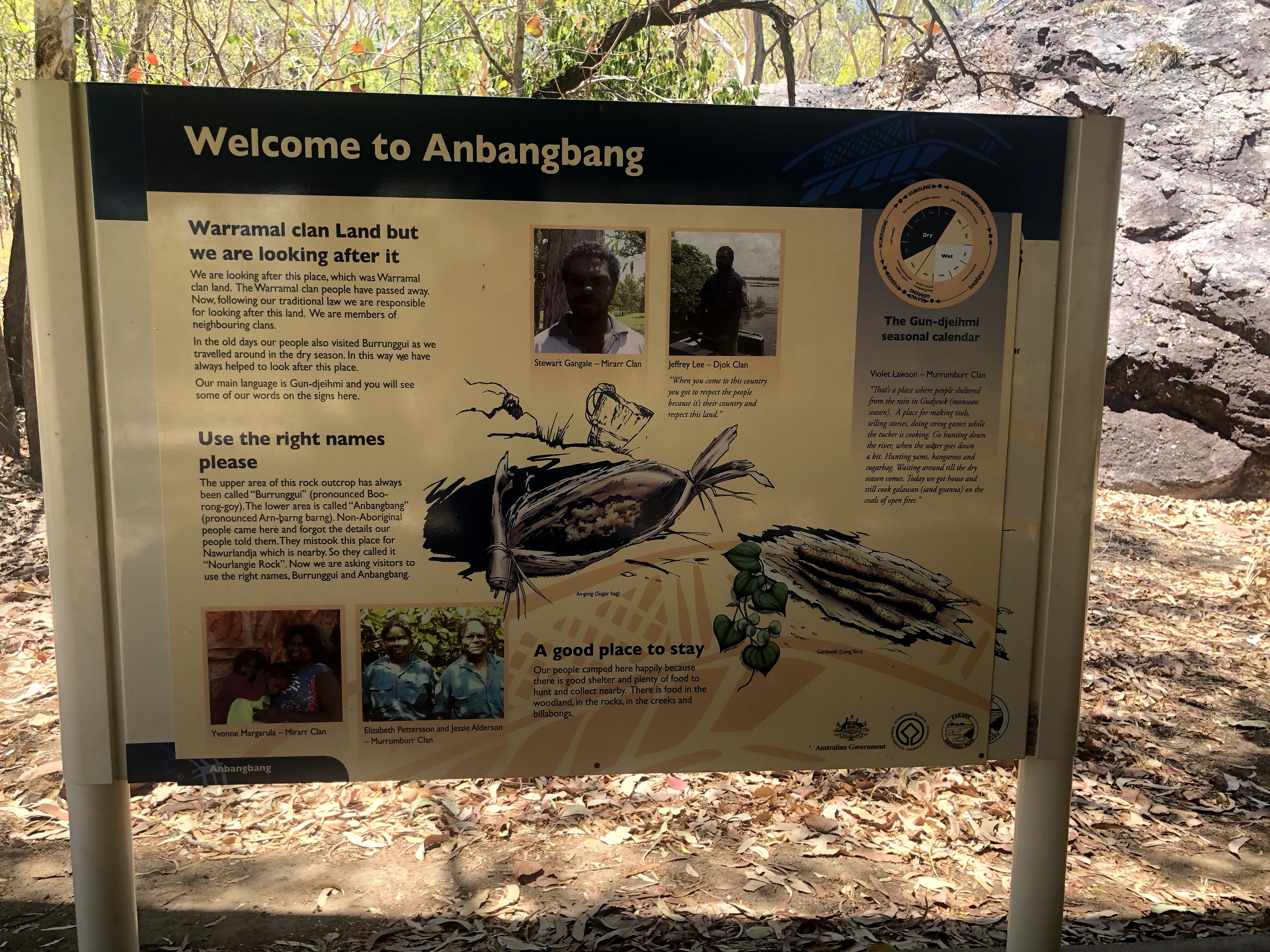
These were just the beginning of the absolutely awesome rock painting galleries we saw in Kakadu and other areas of the Northern Territory and Western Australia. But, given we were awake at an ungodly hour that morning, it was time to call it in for the day, and hit up the pool with a couple of beers to cool down!
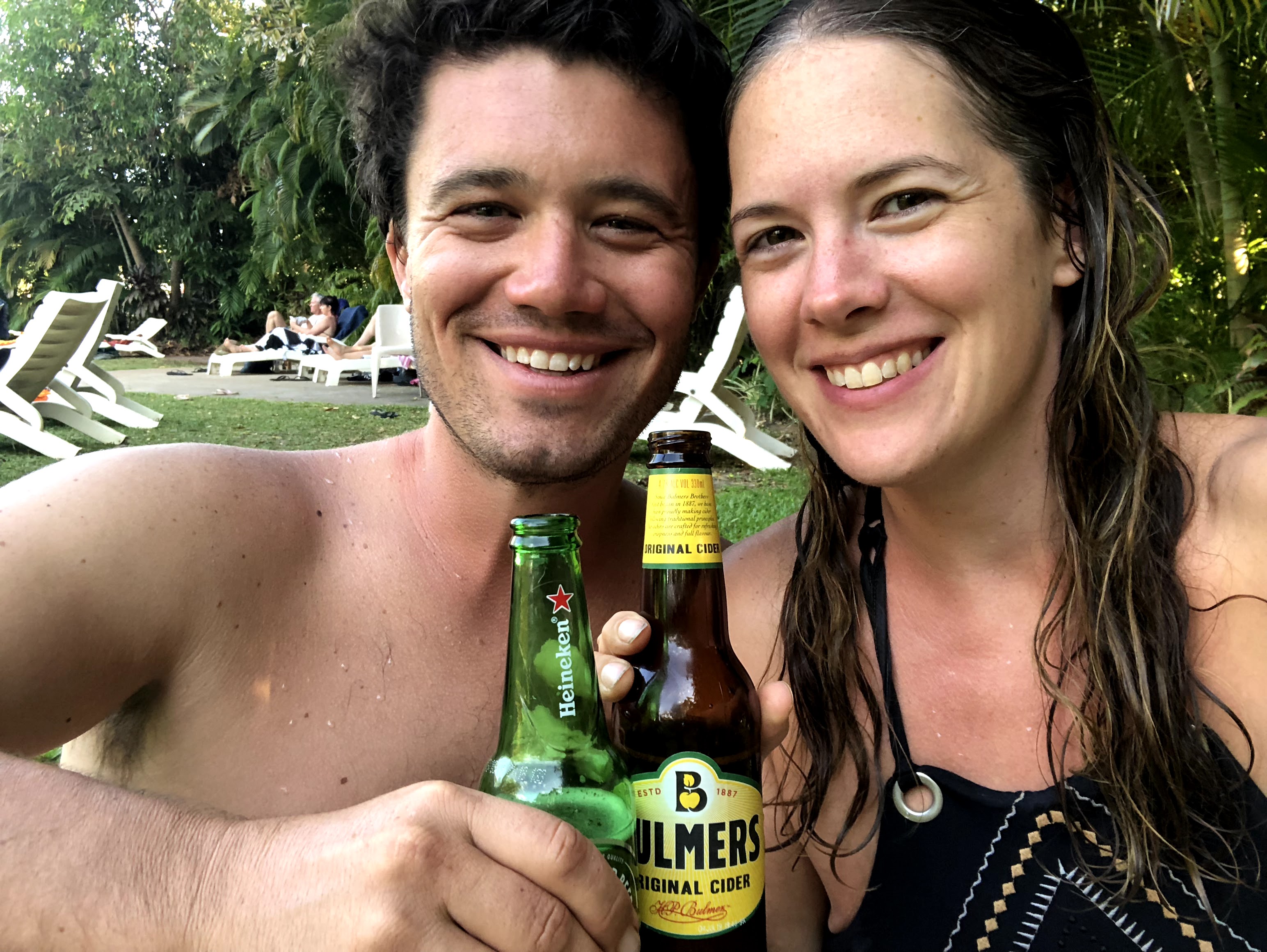
Kakadu borders a huge area of the Northern Territory called “Arnhem Land”, an area covering 97,000 square km and home to about 16,000 people – almost entirely Indigenous. A permit is required to enter and travel within the untouched wilderness of Arnhem Land and while it’s something we would have loved to experience, it wasn’t in the books this time as it’d be a significant undertaking to plan for and get all the permits, not to mention the actual travel time. Another one for the “next time list”.
All of that to lay the context for our destinations for the next day, which are up at the very north-east part of the park, Ubirr and Cahills Crossing.
Cahills Crossing is the road into Arnhem Land, big deal you might think, except this part of the road is a causeway across a river which is absolutely flooded with crocodiles. Here’s a photo, and a short video, I’m just sorry I didn’t catch the guy driving across who nearly hit a croc!


Our second site for the day, Ubirr, is home to another amazing set of rock paintings, as well as one of the best lookouts we’ve been to – it is like standing on top of Pride Rock in the Lion King and gazing out across all of the lands that will be yours, one day, Simba…
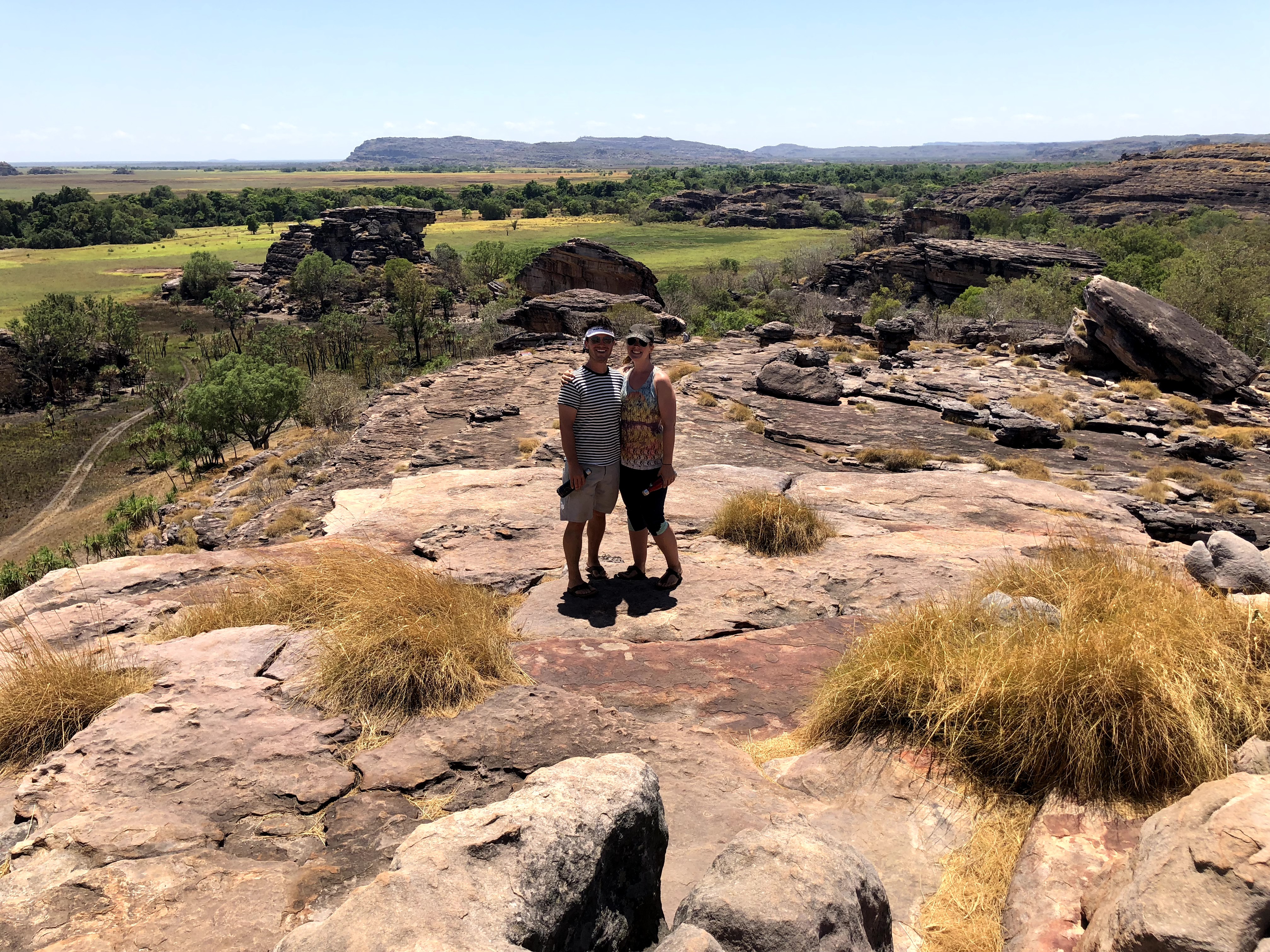
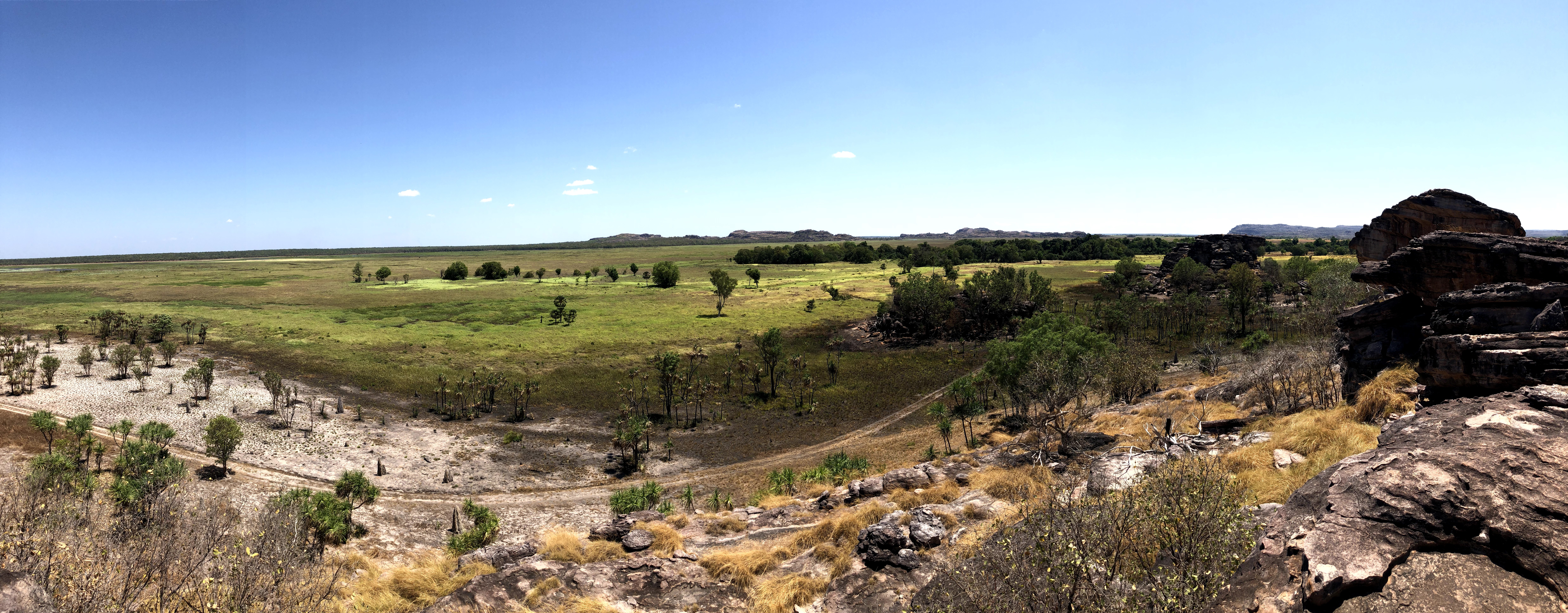
Finally, here’s a few of our favourite rock paintings from the Ubirr galleries. I was especially fascinated by the one which portrays a person with deformed joints, and has a story attached about how drinking the water or venturing into a particular forbidden area will cause people to become sick. Thousands of years later this area was discovered to contain rich uranium stores…
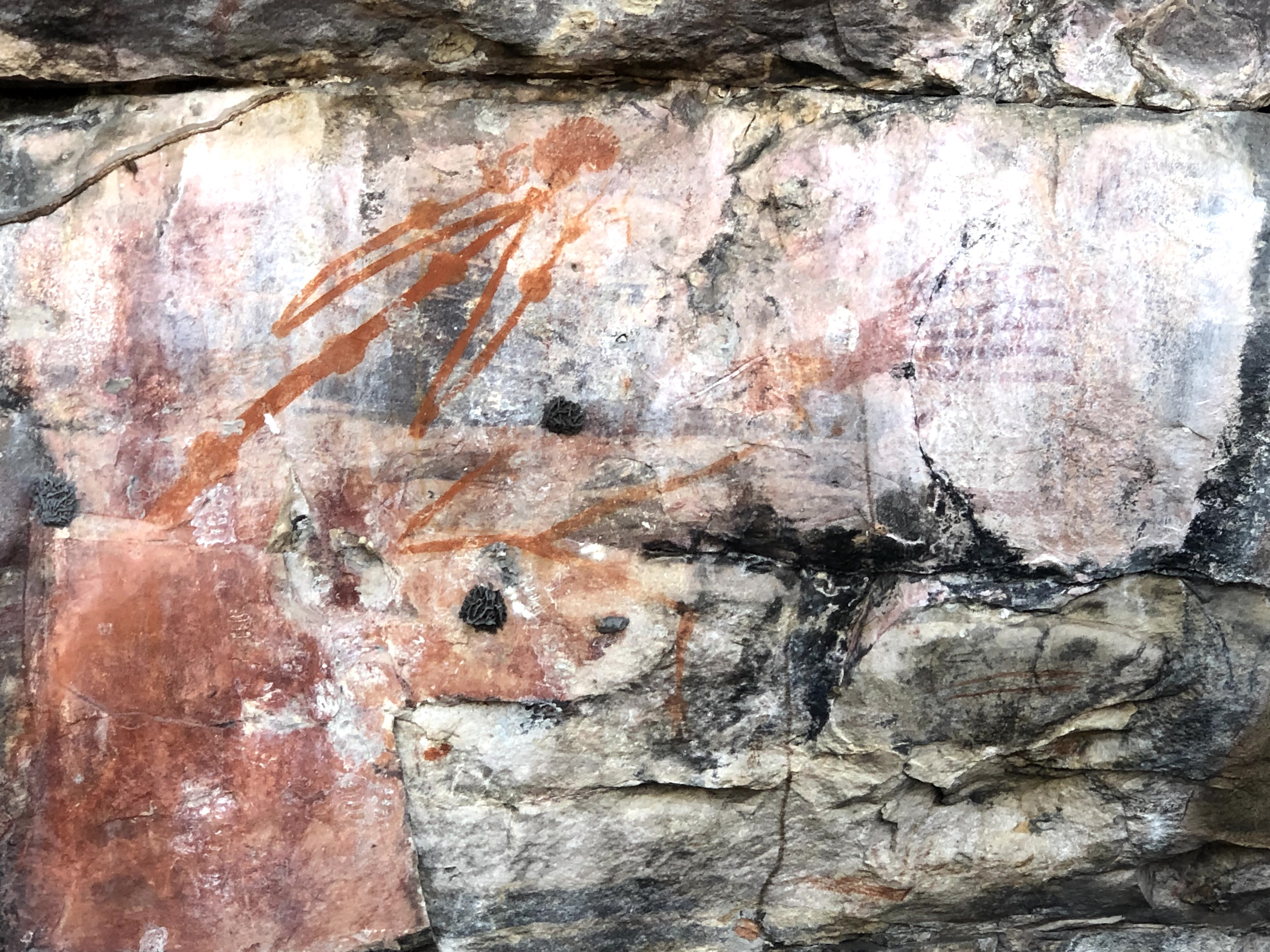
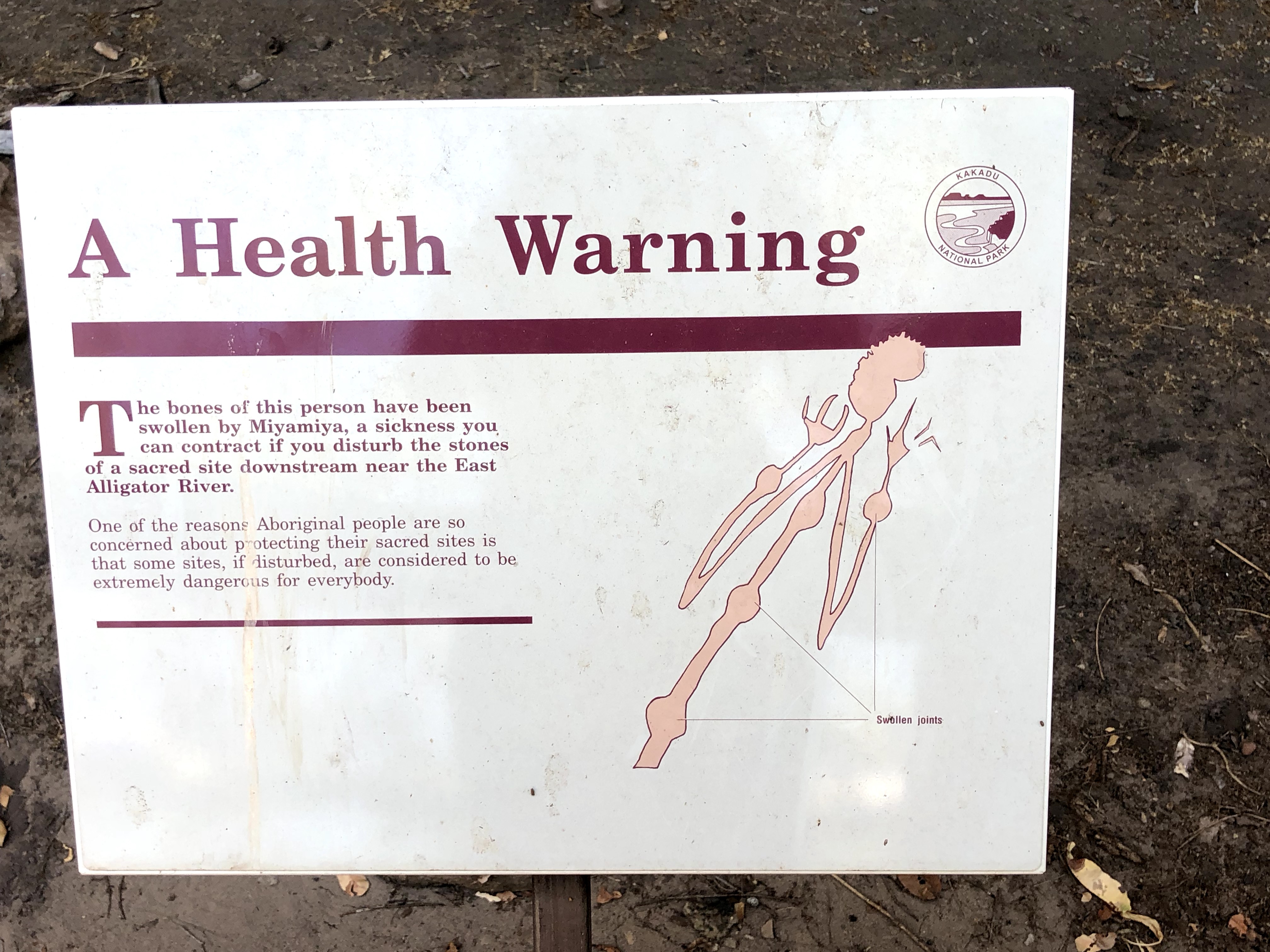
The next day was our last in Kakadu, and we said farewell in style by visiting Jim Jim waterfall. To get to Jim Jim, you’ve got to drive down a fairly long corrugated dirt road, and then walk 2km from the car park. “Walk” is sort of an understatement though – this was a proper hike, with scrambling over rocks and stream crossings required.
As with most of these things, it was well worth it.
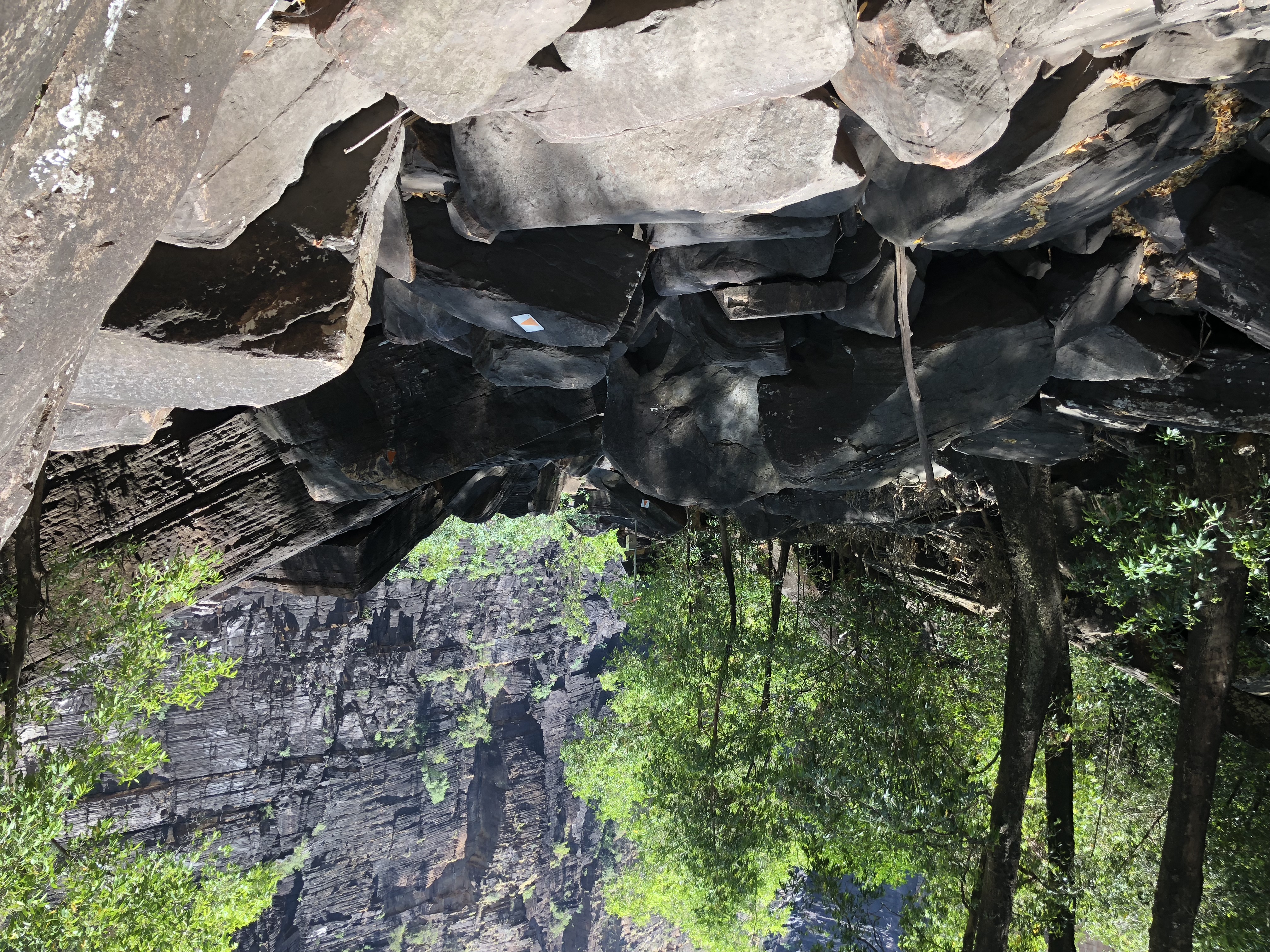
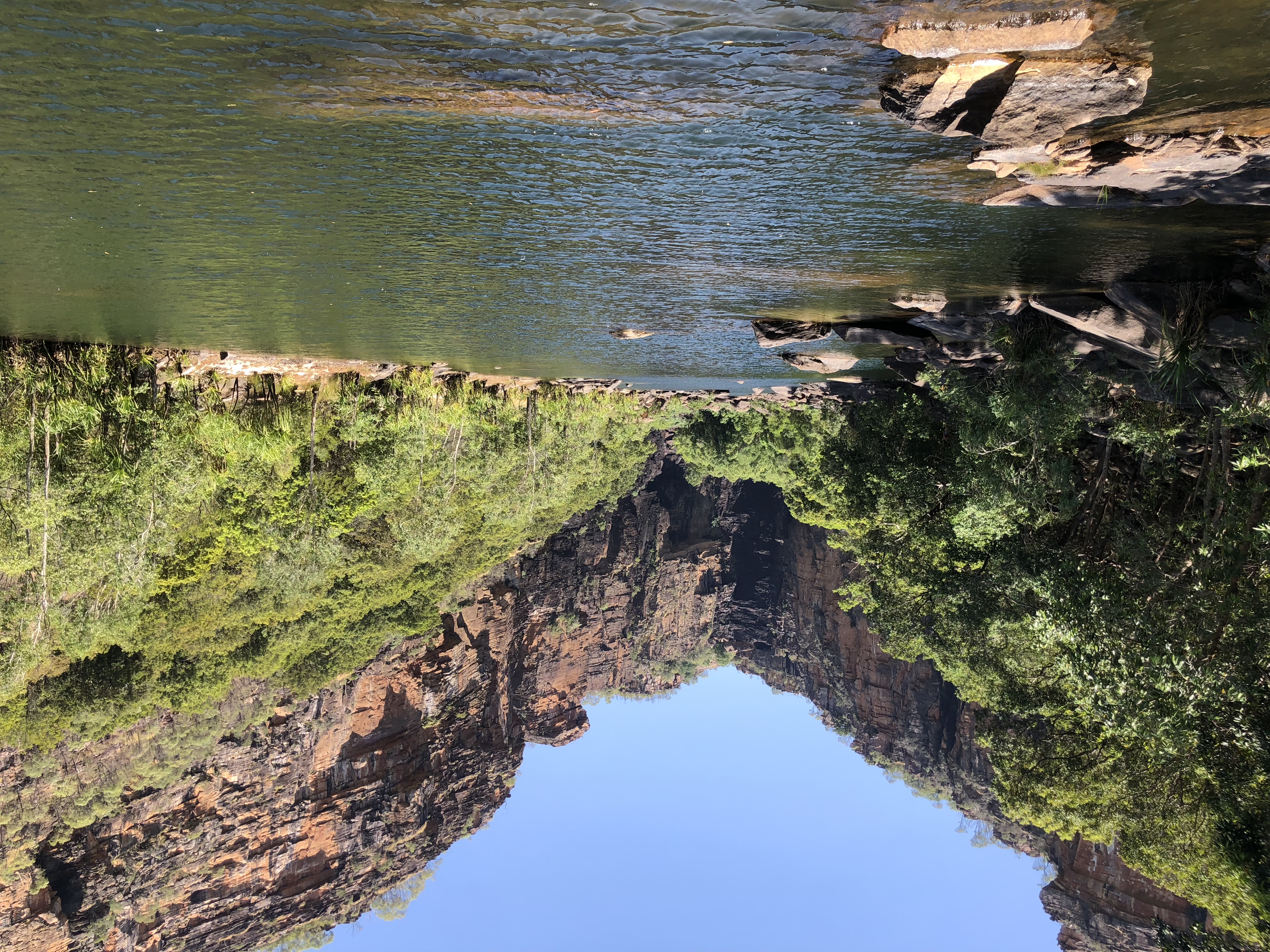
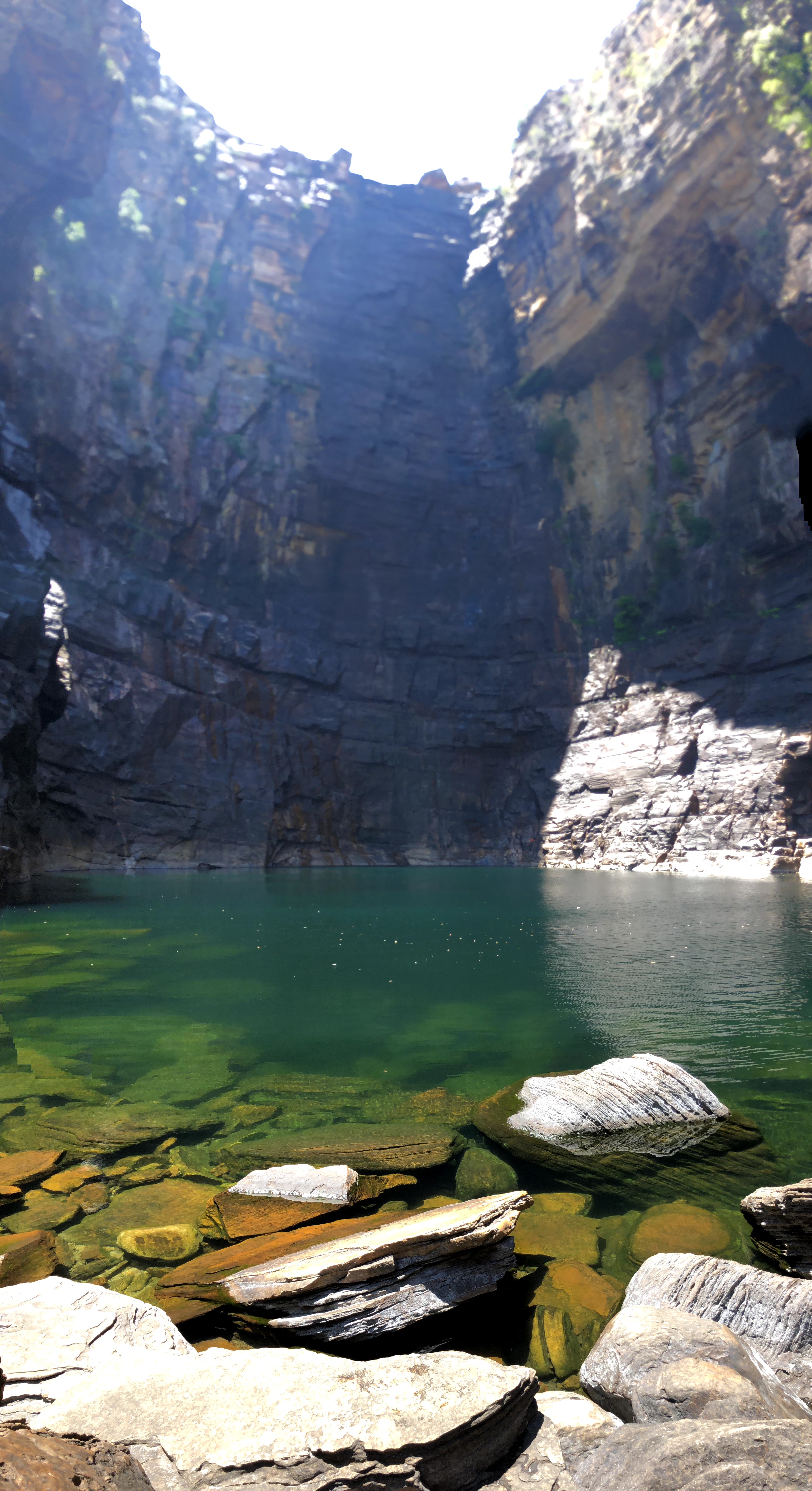
And that was us and a busy 5 days in Kakadu! From Jim Jim we hit the road and drove back to Darwin, hitting a pub in a town called Humpty Doo (!) on the way for dinner. This pub isn’t in our Bush Pubs book, but it should be!
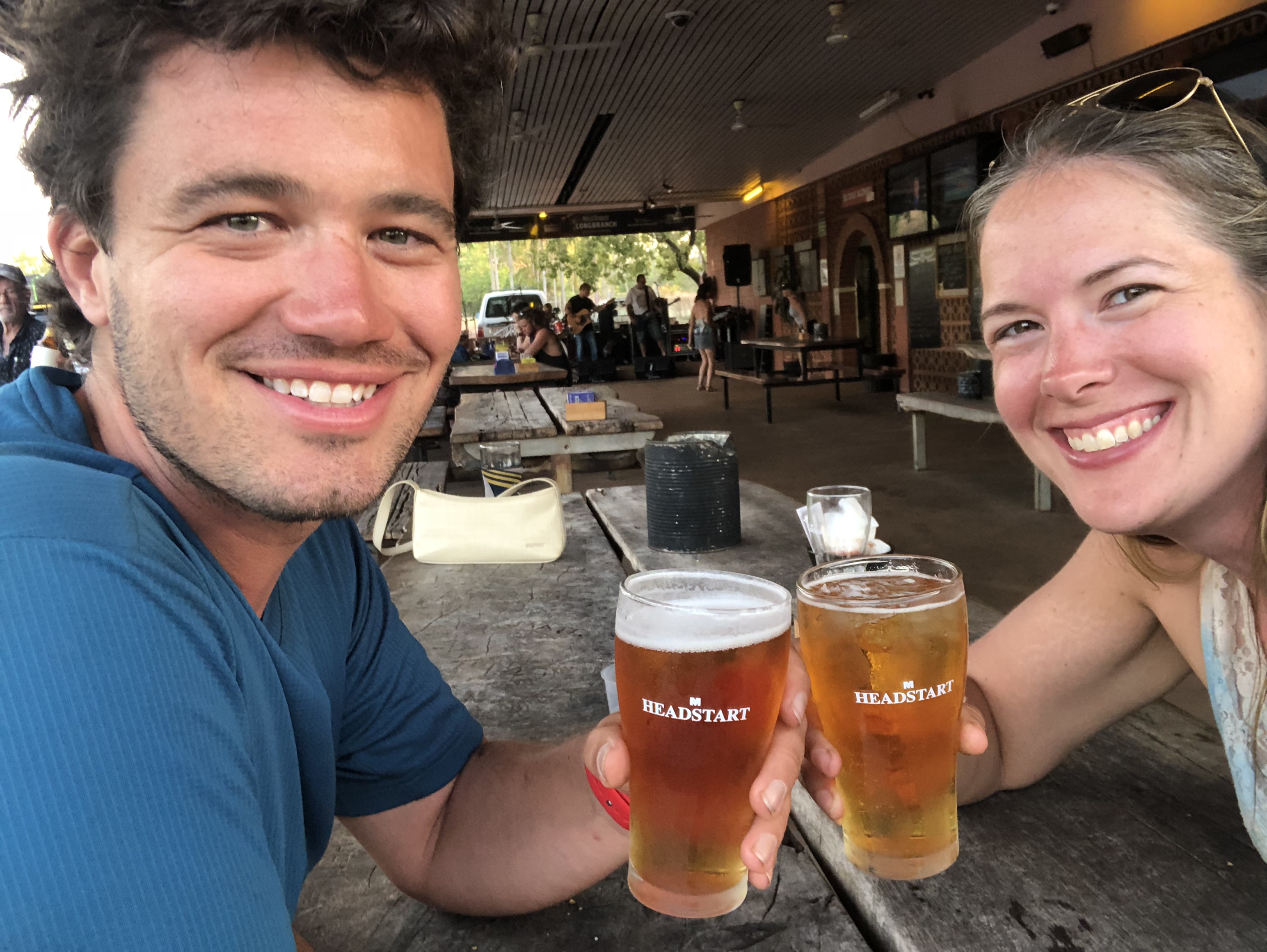
The only reason we headed back to Darwin was to get one last thing looked at on the Jeep. We’re heading west into Western Australia from here, and ordinarily from Kakadu you’d just go through Katherine and head all the way west. But, we were about to hit a super remote section of the country and we really wanted the Jeep to be in absolute top shape before we went! Imagine if there’s ominous music here to go with this not-so-subtle foreshadowing…


